Maté: What 10 Years Of US Meddling In Ukraine Have Wrought (Spoiler Alert: Not Democracy)
Authored by Aaron Maté via RealClear Investigations,
In successfully lobbying Congress for an additional $61 billion in Ukraine war funding, an effort that ended this month with celebratory Democrats waving Ukrainian flags in the House chamber, President Biden has cast his administration’s standoff with Russia as an existential test for democracy.
“What makes our moment rare is that freedom and democracy are under attack, both at home and overseas,” Biden declared in his State of the Union address in March. “History is watching, just like history watched three years ago on January 6th.”
While Biden’s narrative is widely accepted by Washington’s political establishment, a close examination of the president and his top principals’ record dating back to the Obama administration reveals a different picture. Far from protecting democracy from Kyiv to Washington, their role in Ukraine looks more like epic meddling resulting in political upheaval for both countries.
Over the last decade, Ukraine has been the battleground in a proxy war between the U.S. and Russia – a conflict massively escalated by the Kremlin’s invasion in 2022. The fight erupted in early 2014, when Biden and his team, then serving in the Obama administration, supported the overthrow of Ukraine’s elected president, Viktor Yanukovych. Leveraging billions of dollars in U.S. assistance, Washington has shaped the personnel and policies of subsequent Ukrainian governments, all while expanding its military and intelligence presence in Ukraine via the CIA and NATO. During this period, Ukraine has not become an independent self-sustaining democracy, but a client state heavily dependent on European and U.S. support, which has not protected it from the ravages of war.
The Biden-Obama team’s meddling in Ukraine has also had a boomerang effect at home.
As well-connected Washington Beltway insiders such as Hunter Biden have exploited it for personal enrichment, Ukraine has become a source of foreign interference in the U.S. political system – with questions of unsavory dealings arising in the 2016 and 2020 elections as well as the first impeachment of Donald Trump. After years of secrecy, CIA sources have only recently confirmed that Ukrainian intelligence helped generate the Russian interference allegations that engulfed Trump’s presidency. House Democrats' initial attempt to impeach Trump, undertaken in the fall of 2019, came in response to his efforts to scrutinize Ukraine’s Russiagate connection.
This account of U.S. interference in Ukraine, which can be traced to fateful decisions made by the Obama administration, including then-Vice President Biden and his top aides, is based on often overlooked public disclosures. It also relies on the personal testimony of Andrii Telizhenko, a former Ukrainian diplomat and Democratic Party-tied political consultant who worked closely with U.S. officials to promote regime change in Ukraine.
Although he once welcomed Washington’s influence in Ukraine, Telizhenko now takes a different view. “I'm a Ukrainian who knew how Ukraine was 30 years ago, and what it became today,” he says. “For me, it's a total failed state.” In his view, Ukraine has been “used directly by the United States to fight a [proxy] war with Russia” and “as a rag to make money for people like Biden and his family.”
The State Department has accused Telizhenko being part of a "Russia-linked foreign influence network." In Sept. 2020 it revoked his visa to travel to the United States. Telizhenko, who now lives in a western European country where he was granted political asylum, denies working with Russia and says that he is a whistleblower speaking out to expose how U.S. interference has ravaged his country. RealClearInvestigations has confirmed that he worked closely with top American officials while they advanced policies aimed at severing Ukraine’s ties to Russia. No official contacted for this article – including former CIA chief John Brennan and senior State Department official Victoria Nuland – disputed any of his claims.
A Coup in 'Full Coordination' With the U.S.The Biden team’s path to influencing Ukraine began with the eruption of anti-government unrest in November 2013. That month, protesters began filling Kyiv’s Maidan Nezalezhnosti (Independence Square) after then-President Viktor Yanukovych, a notoriously corrupt leader, delayed signing a European Union (EU) trade pact. To members of what came to be known as the Maidan movement, Yanukovych’s decision was a betrayal of his pledge to strengthen Western ties, and a worrying sign of Russian allegiance in a country haunted by its Soviet past.
The reality was more complex. Yanukovych was hoping to maintain relations with both Russia and Europe – and use competition between them to Ukraine’s advantage. He also worried that the EU’s terms, which demanded reduced trade with Russia, would alienate his political base in the east and south, home to millions of ethnic Russians. As the International Crisis Group noted, these Yanukovych-supporting Ukrainians feared that the EU terms “would hurt their livelihoods, a large number of which were tied to trade and close relations with Russia.” Despite claims that the Maidan movement represented a “popular revolution,” polls from that period showed that Ukrainians were evenly split on it, or even majority opposed.
After an initial period of peaceful protest, the Maidan movement was soon co-opted by nationalist forces, which encouraged a violent insurrection for regime change. Leading Maidan’s hardline contingent was Oleh Tyahnybok of the Svoboda party, who had once urged his supporters to fight what he called the “Muscovite-Jewish mafia running Ukraine.” Tyahnybok’s followers were joined by Right Sector, a coalition of ultra-nationalist groups whose members openly sported Nazi insignia. One year before, the European Parliament condemned Svoboda for “racist, anti-Semitic and xenophobic views” and urged Ukrainian political parties “not to associate with, endorse or form coalitions with this party.”
Powerful figures in Washington took a different view: For them, the Maidan movement represented an opportunity to achieve a longtime goal of pulling Ukraine into the Western orbit. Given Ukraine’s historical ties to Russia, its integration with the West could also be used to undermine the rule of Russian President Vladimir Putin.
As the-late Zbigniew Brzezinski, the influential former national security adviser to President Jimmy Carter, once wrote: “Without Ukraine, Russia ceases to be a Eurasian empire.” Two months before the Kyiv protests erupted, Carl Gershman, head of the National Endowment for Democracy, dubbed Ukraine “the biggest prize” in the West’s rivalry with Russia. Absorbing Ukraine, Gershman explained, could leave Putin “on the losing end not just in the near abroad" – i.e, its former Soviet satellites – "but within Russia itself.” Shortly after, senior State Department official Nuland boasted that the U.S. had “invested more than $5 billion” to help pro-Western “civil society” groups achieve a “secure and prosperous and democratic Ukraine.”
Seeking to capitalize on the unrest, U.S. figures including Nuland, Republican Sen. John McCain, and Democratic Sen. Chris Murphy visited Maidan Square. In a show of support for the movement’s hardline faction, which went beyond supporting the EU trade deal to demand Yanukovych’s ouster, the trio met privately with Tyahnybok and appeared with him on stage. The senators' mission, Murphy said, was to “bring about a peaceful transition here.”
The Maidan Movement’s most significant U.S. endorsement came from then-Vice President Joe Biden. “Nothing would have greater impact for securing our interests and the world’s interests in Europe than to see a democratic, prosperous, and independent Ukraine in the region,” Biden said.
According to Andrii Telizhenko, a former Ukrainian government official who worked closely with Western officials during this period, the U.S. government’s role went far beyond those high-profile displays of solidarity.
“As soon as it grew into something, into the bigger Maidan, in the beginning of December, it basically was full coordination with the U.S. Embassy,” Telizhenko recalls. “Full, full.”
When the protests erupted, Telizhenko was working as an adviser to a Ukrainian member of Parliament. Having spent part of his youth in Canada and the United States, Telizhenko’s fluent English and Western connections landed him a position helping to oversee the Maidan Movement’s international relations. In this role, he organized meetings with and coordinated security arrangements for foreign visitors, including U.S. Ambassador Geoffrey Pyatt, Nuland, and McCain. Most of their briefings were held at Kyiv’s Trade Unions Building, the movement’s de-facto headquarters in the city’s center.
Telizhenko says Pyatt routinely coordinated with Maidan leaders on protest strategy. In one encounter, the ambassador observed Right Sector members assembling Molotov cocktails that would later be thrown at riot police attempting to enter the building. Sometimes, the U.S. ambassador disapproved of his counterparts’ tactics. “The U.S. embassy would criticize if something would happen more radical than it was supposed to go by plan, because it's bad for the picture,” Telizhenko said..
That winter was marked by a series of escalating clashes. On February 20, 2014, snipers fatally shot dozens of protesters in Maidan square. Western governments attributed the killings to Yanukovych's forces. But an intercepted phone call between NATO officials told a different story.
In the recorded conversation, Estonian foreign minister Urmas Paet told EU foreign secretary Catherine Ashton that he believed pro-Maidan forces were behind the slaughter. In Kyiv, Paet reported, “there is now stronger and stronger understanding that behind the snipers, it was not Yanukovych, but it was somebody from the new [opposition] coalition.”
In a bid to resolve the Maidan crisis and avoid more bloodshed, European officials brokered a compromise between Yanukovich and the opposition. The Feb. 21 deal called for a new national unity government that would keep him in office, with reduced powers, until early elections at year’s end. It also called for the disarmament of the Maidan forces and a withdrawal of riot police. Holding up its end of the bargain, government security forces pulled back. But the Maidan encampment's ultra-nationalist contingent had no interest in compromise.
“We don’t want to see Yanukovych in power,” Maidan Movement squadron leader Vladimir Parasyuk declared that same day. “… And unless this morning you come up with a statement demanding that he steps down, then we will take arms and go, I swear.”
In insisting on regime change, the far-right contingent was also usurping the leadership of more moderate opposition leaders such as Vitali Klitschko, who supported the power-sharing agreement.
“The goal was to overthrow the government,” Telizhenko says. “That was the first goal. And it was all green-lighted by the U.S. Embassy. They basically supported all this, because they did not tell them to stop. If they told them [Maidan leaders] to stop, they would stop.”
Yet another leaked phone call bolstered suspicions that the U.S. endorsed regime change. On the recording, presumably intercepted in January by Russian or Ukrainian intelligence, Nuland and Pyatt discussed their choice of leaders in a proposed power-sharing government with Yanukovich. Their conversation showed that the U.S. exerted considerable influence with the faction seeking the Ukrainian president’s ouster.
Tyahnybok, the openly antisemitic head of Svodova, would be a “problem” in office, Nuland worried, and better “on the outside.” Klitschko, the more moderate Maidan member, was ruled out as well. “I don’t think Klitsch should go into government,” Nuland said. “I don’t think it’s necessary. I don’t think it’s a good idea.” One reason was Klitschko's proximity to the European Union. Despite her government’s warm words for the European Union in public, Nuland told Pyatt: “Fuck the EU.”
The two U.S. officials settled on technocrat Arseniy Yatsenyuk. “I think Yats is the guy,” Nuland said. By that point, Yatsenyuk had endorsed violent insurrection. The government’s rejection of Maidan demands, he said, meant that “people had acquired the right to move from non-violent to violent means of protest.”
The only outstanding matter, Pyatt relayed, was securing “somebody with an international personality to come out here and help to midwife this thing.” Nuland replied that Vice President Joe Biden and his senior aide, Jake Sullivan, who now serves as Biden’s National Security Adviser, had signed on to provide “an atta-boy and to get the deets [details] to stick.”
Just hours after the power-sharing agreement was reached, Nuland’s wishes were granted. Yanukovich, no longer protected by his armed forces, fled the capital. Emboldened by their sabotage of an EU-brokered power-sharing truce, Maidan Movement members stormed the Ukrainian Parliament and pushed through the formation of a new government. In violation of parliamentary rules on impeachment proceedings, and lacking a sufficient quorum, Oleksandr Turchynov was named the new acting president. The Nuland-backed Yatsenyuk was appointed Prime Minister.
In a reflection of their influence, at least five post-coup cabinet posts in national security, defense, and law enforcement were given to members of Svoboda and its far-right ally Right Sector.
“The uncomfortable truth is that a sizeable portion of Kyiv’s current government – and the protesters who brought it to power – are, indeed, fascists,” wrote Andrew Foxall, now a British defense official, and Oren Kessler, a Tel Aviv-based analyst, in Foreign Policy the following month. While denying any role in Yanukovich’s ouster, the Obama administration immediately endorsed it, as Secretary of State John Kerry expressed “strong support” for the new government.
In his memoir, former senior Obama aide Ben Rhodes acknowledged that Nuland and Pyatt “sounded as if they were picking a new government as they evaluated different Ukrainian leaders.” Rather than dispel that impression, he acknowledged that some of the Maidan “leaders received grants from U.S. democracy promotion programs.”
In 2012, one pro-Maidan group, Center UA, received most of its more than $500,000 in donations from the U.S. Agency for International Development (USAID), the National Endowment for Democracy, eBay founder Pierre Omidyar, and financier George Soros.
By its own count, Soros’ International Renaissance Foundation spent over $109 million in Ukraine between 2004 and 2014. In leaked documents, a former IRF board member even bragged that its partners “were the main driving force and the foundation of the Maidan movement,” and that without Soros’ funding, “the revolution might not have succeeded.” Weeks after the coup, an IRF strategy document noted, “Like during the Maidan protests, IRF representatives are in the midst of Ukraine’s transition process.”
Jeffrey Sachs, a Columbia University professor who advised Ukraine on economic policy in the early 1990s, visited Kyiv shortly after the coup to consult with the new government.
“I was taken around the Maidan where people were still milling around,” Sachs recalls. “And the American NGOs were around there, and they were describing to me: ‘Oh we paid for this, we paid for that. We funded this insurrection.’ It turned my stomach.” Sachs believes that these groups were acting at the behest of U.S. intelligence. To go about “funding this uprising,” he says, “they didn't do that on their own as nice NGOs. This is off-budget financing for a U.S. regime-change operation.”
Weeks after vowing to bring about a “transition” in Ukraine, Sen. Murphy openly took credit for it. “I really think that the clear position of the United States has in part been what has helped lead to this change in regime,” Murphy said. “I think it was our role, including sanctions and threats of sanctions, that forced, in part, Yanukovych from office.”
The Proxy War Gets HotFar from resolving the unrest, Viktor Yanukovych’s ouster plunged Ukraine into a war.
Just days after the Ukrainian president fled to Moscow, Russian special forces stormed Crimea’s local parliament. The following month, Russia annexed Crimea following a hasty, militarized referendum denounced by Ukraine, the U.S., and much of the world. While these objections were well-founded, Western surveys of Crimeans nonetheless found majority support for Russian annexation.
Emboldened by the events in Crimea, and hostile to a new government that had overthrown their elected leader Yanukovych, Russophile Ukrainians in the eastern Donbas region followed suit.
On April 6 and 7, anti-Maidan protesters seized government buildings in Donetsk, Luhansk, and Kharkiv. The Donetsk rebels declared the founding of the Donetsk People’s Republic. The Luhansk People’s Republic followed 20 days later. Both areas announced independence referendums for May 11.
As in Crimea, Moscow backed the Donbas rebellion. But unlike in Crimea, the Kremlin opposed the independence votes. The organizers, Putin said, should “hold off on the referendum in order to give dialogue the conditions it needs to have a chance.”
In public, the Obama administration claimed to also favor dialogue between Kyiv and the Russia-backed rebels in eastern Ukraine. Behind the scenes, a more aggressive plan was brewing.
On April 12, CIA chief John Brennan slipped into the Ukrainian capital for secret meetings with top officials. Russia, whose intelligence services ran a network of informants inside Ukraine, publicly outed Brennan’s visit. The Kremlin and Yanukovych directly accused Brennan of encouraging an assault on the Donbas.
The CIA dismissed the allegation as “completely false,” and insisted that Brennan supported a “diplomatic solution” as “the only way to resolve the crisis.” The following month, Brennan insisted that “I was out there to interact with our Ukrainian partners and friends.”
Yet Russia and Yanukovych were not alone in voicing concerns about the CIA chief’s covert trip. “What message does it send to have John Brennan, the head of the CIA in Kiev, meeting with the interim government?” Sen. Murphy complained. “Does that not confirm the worst paranoia on the part of the Russians and those who see the Kiev government as essentially a puppet of the West?... It may not be super smart to have Brennan in Kiev, giving the impression that the United States is somehow there to fight a proxy war with Russia.”
According to Telizhenko, who attended the Brennan meeting and spoke to RCI on record about it for the first time, that’s exactly what the CIA chief was there to do. Contrary to U.S. claims, Telizhenko says, “Brennan gave a green light to use force against Donbas,” and discussed “how the U.S. could support it.” One day after the meeting, Kyiv announced an “Anti-Terrorist Operation” (ATO) against the Donbas region and began a military assault.
Telizhenko, who was by then working as a senior policy adviser to Vitaliy Yarema, the First Deputy Prime Minister, says he helped arrange the Brennan gathering after getting a phone call from the U.S. embassy. “I was told there was going to be a top secret meeting, with a top U.S. official and that my boss should be there,” he recalls. “I was also told not to tell anyone.”
Brennan, he recalls, arrived at the Foreign Intelligence Office of Ukraine in a beat-up gray mini-van and a coterie of armed guards. Others in attendance included U.S. Ambassador Pyatt, Acting President Oleksandr Turchynov, foreign intelligence chief Victor Gvozd, and other senior Ukrainian security officials.
After a customary exchange of medals and souvenir trophies, the topic turned to the unrest in the Donbas. “Brennan was talking about how Ukraine should act,” Telizhenko says. “A plan to keep Donbas in Ukraine’s hands. But Ukraine’s army was not fully equipped. We only had stuff in reserves. They discussed plans for the ATO and how to keep Ukraine’s military fully armed throughout.” Brennan’s overall message was that “Russia is behind” the Donbas unrest, and “Ukraine has to take firm, aggressive action to not let this spread all over.”
Brennan and Pyatt did not respond to a request for comment.
Two weeks after Brennan’s visit, the Obama administration offered yet another high-level endorsement of the Donbas operation when then-Vice President Biden visited Kyiv. With Ukraine facing “unrest and uncertainty,” Biden told a group of lawmakers, it now had “a second opportunity to make good on the original promise made by the Orange Revolution” – referring to earlier 2004-2005 post-electoral upheaval that blocked Yanukovych, albeit temporarily, from the presidency.
Looking back, Telizhenko is struck by the contrast between Brennan’s bellicosity in Donbas and the Obama administration’s lax response to Russia’s Crimea grab one month prior.
“After Crimea, they told us not to respond,” he said. But beforehand, “the Americans scoffed at warnings” that Ukraine could lose the peninsula. When Ukrainian officials met with Pentagon counterparts in March, “we gave them evidence that the little green men” – the incognito Russian forces who seized Crimea – “were Russians. They dismissed it.” Telizhenko now speculates that the U.S. permitted the Crimean takeover to encourage a conflict between Kyiv and Moscow-backed eastern Ukrainians. “I think they wanted Ukraine to hate Russia, and they wanted Russia to take the bait,” he said. Had Ukraine acted earlier, he believes, “the Crimea situation could have been stopped.”
With Russia in control of Crimea and Ukraine assaulting the Donbas with U.S. backing, the country descended into a full-scale civil war. Thousands were killed and millions displaced in the ensuing conflict. When Ukrainian forces threatened to overrun the Donbas rebels in August 2014, the Kremlin launched a direct military intervention that turned the tide. But rather than offer Ukraine more military assistance, Obama began getting cold feet.
Obama, senior Pentagon official Derek Chollet recalled, was concerned that flooding Ukraine with more weapons would “escalate the crisis” and give “Putin a pretext to go further and invade all of Ukraine.”
Rebuffing pressure from within his own Cabinet, Obama promised German Chancellor Angela Merkel in February 2015 that he would not send lethal aid to Ukraine. According to the U.S. Ambassador to Germany, Peter Wittig, Obama agreed with Merkel on the need “to give some space for those diplomatic, political efforts that were under way.”
That same month, Obama’s commitment gave Merkel the momentum to finalize the Minsk II Accords, a pact between Kyiv and Russian-backed Ukrainian rebels. Under Minsk II, an outmatched Ukrainian government agreed to allow limited autonomy for the breakaway Donbas regions in exchange for the rebels’ demilitarization and the withdrawal of their Russian allies.
Inside the White House, Obama’s position on Ukraine left him virtually alone. Obama’s reluctance to arm Ukraine, Chollet recalled, marked a rare situation “in which just about every senior official was for doing something that the president opposed.”
One of those senior officials was the State Department’s point person for Ukraine, Victoria Nuland. Along with allied officials and lawmakers, Nuland sought to undermine the Minsk peace pact even before it was signed.
As Germany and France lobbied Moscow and Kyiv to accept a peace deal, Nuland addressed a private meeting of U.S. officials, generals, and lawmakers – including Sen. McCain and future Secretary of State Mike Pompeo – on the sidelines of the annual Munich Security Conference. Dismissing the French-German diplomatic efforts as an act of appeasement, Nuland outlined a strategy to continue the war with a fresh influx of Western arms. Perhaps mindful of the optics of flooding Ukraine with military hardware at a time when the Obama administration was claiming to support to a peace agreement, Nuland offered a public relations suggestion. “I would like to urge you to use the word ‘defensive system’ to describe what we would be delivering against Putin’s offensive systems,” Nuland told the gathering.
The Munich meeting underscored that while President Obama may have publicly supported a peace deal in Ukraine, a bipartisan alliance of powerful Washington actors – including his own principals – was determined to stop it. As Foreign Policy magazine reported, “the takeaway for many Europeans ... was that Nuland gave short shrift to their concerns about provoking an escalation with Russia and was confusingly out of sync with Obama.”
As Nuland and other officials quietly undermined the Minsk accords, the CIA deepened its role in Ukraine. U.S. intelligence sources recently disclosed to the New York Times that the agency has operated 12 secret bases inside Ukraine since 2014. The post-coup government’s first new spy chief, Valentyn Nalyvaichenko, also revealed that he established a formal partnership with the CIA and MI6 just two days after Yanukovych’s ouster.
According to a separate account in the Washington Post, the CIA restructured Ukraine’s two main spy services and turned them into U.S. proxies. Starting in 2015, the CIA transformed Ukraine’s military intelligence agency, the GUR, so extensively that “we had kind of rebuilt it from scratch,” a former intelligence official told the Post. “GUR was our little baby.” As a benefit of being the CIA's proxy, the agency even funded new headquarters for the GUR’s paramilitary wing and a separate division for electronic espionage.
In a 2016 congressional appearance, Nuland touted the extensive U.S. role in Ukraine. “Since the start of the crisis, the United States has provided over $760 million in assistance to Ukraine, in addition to two $1 billion loan guarantees,” Nuland said. U.S. advisers “serve in almost a dozen Ukrainian ministries,” and were helping “modernize Ukraine’s institutions” of state-owned industries.
Nuland’s comments underscored an overlooked irony of the U.S. role in Ukraine: In claiming to defend Ukraine from Russian influence, Ukraine was subsumed by American influence.
Boomeranging Into U.S. PoliticsIn the aftermath of the February 2014 coup, the transformation of Ukraine into an American client state soon had a boomerang effect, as maneuvers in that country increasingly impacted U.S. domestic politics.
“Americans are highly visible in the Ukrainian political process,” Bloomberg columnist Leonid Bershidsky observed in November 2015. “The U.S. embassy in Kyiv is a center of power, and Ukrainian politicians openly talk of appointments and dismissals being vetted by U.S. Ambassador Geoffrey Pyatt and even U.S. Vice President Joe Biden.”
One of the earliest and best-known cases came in December 2015, when Biden threatened to withhold $1 billion in aid unless Ukraine fired its prosecutor general, Viktor Shokin, whom the vice president claimed was corrupt. When Biden’s threat resurfaced as an issue during the 2020 election, the official line, as reported by CNN, was that “the effort to remove Shokin was backed by the Obama administration, European allies” and even some Republicans.
In fact, from Washington’s perspective, the campaign for Shokin’s ouster marked a change of course. Six months before Biden’s visit, Nuland had written Shokin that “We have been impressed with the ambitious reform and anti-corruption agenda of your government.”
An Oct. 1, 2015, memo summarizing the recommendation of the [U.S.] Interagency Policy Committee on Ukraine stated, “Ukraine has made sufficient progress on its [anti-corruption] reform agenda to justify a third [loan] guarantee.” … The next month, moreover, the task force drafted a loan guarantee agreement that did not call for Shokin’s removal. Then, in December, Joe Biden flew to Kyiv to demand his ouster.
No one has explained why Shokin suddenly came into the crosshairs. At the time, the prosecutor general was investigating Burisma, a Ukrainian energy firm that was paying Hunter Biden over $80,000 per month to sit on its board.
According to emails obtained from his laptop, Hunter Biden introduced his father to a top Burisma executive less than one year before. Burisma also retained Blue Star Strategies, a D.C. consulting firm that worked closely with Hunter, to help enlist U.S. officials who could pressure the Ukrainian government to drop its criminal probes.
Two senior executives at Blue Star, Sally Painter and Karen Tramontano, formerly worked as top aides to President Bill Clinton.
According to a November 2015 email sent to Hunter by Vadym Pozharsky, a Burisma adviser, the energy firm’s desired “deliverables” included visits from “influential current and/or former US policy-makers to Ukraine.” The “ultimate purpose” of these visits would be “to close down” any legal cases against the company’s owner, Mykola Zlochevsky. One month after that email, Joe Biden visited Ukraine and demanded Shokin’s firing.
Telizhenko – who worked in Shokin’s office at the time, and later worked for Blue Star – said the evidence contradicts claims that Shokin was fired because of his failure, among other things, to investigate Burisma. “There were four criminal cases opened in 2014 against Burisma, and two more additionally opened by Shokin when he became the Prosecutor General,” recalls Telizhenko. “So, whenever anybody says, ‘There were no criminal cases, nobody was investigating Burisma, Shokin was fired because he was a bad prosecutor, he didn't do his work’ ... this was all a lie. No, he did his work.”
In a 2023 interview, Hunter Biden’s former business partner, Devon Archer, said Shokin was seen as a “threat” to Burisma. Both of Shokin’s cases against Burisma were closed after his firing.
Ukraine Meddling vs. TrumpWhile allegations of Russian interference and collusion would come to dominate the 2016 campaign, the first documented case of foreign meddling originated in Ukraine.
Telizhenko, who served as a political officer at the Ukrainian embassy in Washington, D.C., before joining Blue Star, was an early whistleblower. He went public in January 2017, telling Politico how the Ukrainian embassy worked to help Hillary Clinton’s 2016 election campaign and undermine Trump’s.
According to Telizhenko, Ukraine’s D.C. ambassador, Valeriy Chaly, instructed staffers to shun Trump’s campaign because “Hillary was going to win.”
Telizhenko says he was told to meet with veteran Democratic operative Alexandra Chalupa, who had also served in the Clinton White House. “The U.S. government and people from the Democratic National Committee are approaching and asking for dirt on a presidential candidate,” Telizhenko recalls. “And Chalupa said, ‘I want dirt. I just want to get Trump off the elections.’”
Starting in early 2016, U.S. officials leaned on the Ukrainians to investigate Paul Manafort, the GOP consultant who would become Trump’s campaign manager, and avoid scrutiny of Burisma, as RCI reported in 2022. “Obama’s NSC hosted Ukrainian officials and told them to stop investigating Hunter Biden and start investigating Paul Manafort,” a former senior NSC official told RCI. In January 2016, the FBI suddenly reopened a closed investigation into Manafort for potential money laundering and tax evasion connected to his work in Ukraine.
Telizhenko, who attended a White House meeting with Ukrainian colleagues that same month, says he witnessed Justice Department officials pressing representatives of Ukraine’s Corruption Bureau. “The U.S. officials were asking for the Ukrainian officials to get any information, financial information, about Americans working for the former government of Ukraine, the Yanukovych government,” he says.
By the time Telizhenko spoke out, Ukrainian officials had already admitted intervening in the 2016 election to help Clinton’s campaign. In August, Ukraine’s National Anti-Corruption Bureau (NABU) released what it claimed was a secret ledger showing that Manafort received millions in illicit cash payments from Yanukovych’s party. The Clinton campaign, then in the early stages of its effort to portray their Republican rival as a Russian conspirator, seized on the news as evidence of Trump’s “troubling connections” to “pro-Kremlin elements in Ukraine.”
The alleged ledger was first obtained by Ukrainian lawmaker Serhiy Leshchenko, who had claimed that he had received it anonymously by mail. Yet Leshchenko was not an impartial source: He made no effort to hide his efforts to help elect Clinton. “A Trump presidency would change the pro-Ukrainian agenda in American foreign policy,” Leshchenko told the Financial Times. For him, “it was important to show ... that [Trump] is [a] pro-Russian candidate who can break the geopolitical balance in the world.” Accordingly, he added, most of Ukraine’s politicians were “on Hillary Clinton’s side.”
Manafort, who would be convicted of unrelated tax and other financial crimes in 2018, denied the allegation. The ledger was handwritten and did not match the amounts that Manafort was paid in electronic wire transfers. Moreover, the ledger was said to have been stored at Yanukovych’s party headquarters, yet that building was burned in a 2014 riot by Maidan activists.
Telizhenko agrees with Manafort that the ledger was a fabrication. “I think the ledger was just made up because nobody saw it, and nobody got the official documents themselves. From my understanding it was all a toss-up, a made-up story, just because they could not find any dirt on the Trump campaign.”
But with the U.S. media starting to amplify the Clinton campaign’s Trump-Russia conspiracy theories, a wary Trump demanded Manafort's resignation. “The easiest way for Trump to sidestep the whole Ukraine story is for Manafort not to be there,” Newt Gingrich, the former House speaker and a Trump campaign adviser, explained.
The 2016 Russian Hacking ClaimThe release of the Manafort ledger and cooperation with the Democratic National Committee was not the end of Ukraine’s 2016 election interference.
A recent account in the New York Times revealed that Ukrainian intelligence played a vital role in generating CIA allegations that would become a foundation of the Russiagate hoax – that Russia stole Democratic Party emails and released them via WikiLeaks in a bid to help elect Trump. Once again, CIA chief Brennan played a critical role.
In the Times’ telling, some Obama officials wanted to shut down the CIA’s work in Ukraine after a botched August 2016 Ukrainian intelligence operation in Crimea turned deadly. But Brennan “persuaded them that doing so would be self-defeating, given the relationship was starting to produce intelligence on the Russians as the C.I.A. was investigating Russian election meddling.” This “relationship” between Brennan and his Ukrainian counterparts proved to be pivotal. According to the Times, Ukrainian military intelligence – which the CIA closely managed – claimed to have duped a Russian officer into “into providing information that allowed the C.I.A. to connect Russia’s government to the so-called Fancy Bear hacking group.”
“Fancy Bear” is one of two alleged Russian cyber espionage groups that the FBI has accused of carrying out the 2016 DNC email theft. Yet this allegation has a direct tie not just to Ukraine, but to the Clinton campaign. The name “Fancy Bear” was coined by CrowdStrike, a private firm working directly for Clinton’s attorney, Michael Sussmann. As RealClearInvestigations has previously reported, CrowdStrike first accused Russia of hacking the DNC, and the FBI relied on the firm for evidence. Years after publicly accusing Russia of the theft, CrowdStrike executive Shawn Henry was forced to admit in sworn congressional testimony that the firm “did not have concrete evidence” that Russian hackers took data from the DNC servers.
CrowdStrike’s admission about the evidentiary hole in the Russian hacking allegation, along with the newly disclosed Ukrainian intelligence role in generating it, were both kept under wraps throughout the entirety of Special Counsel Robert Muller’s probe into alleged Russian interference. But when Trump sought answers on both matters, he once again found himself the target of an investigation.
In late September 2019, weeks after Mueller’s halting congressional testimony – which left Trump foes dissatisfied over his failure to find insufficient evidence of a Russian conspiracy – House Democrats kicked off an effort to impeach Trump for freezing U.S. weapons shipments in an alleged scheme to pressure Ukraine into investigating the Bidens. The impeachment was triggered by a whistleblower complaint about a phone call between Trump and Ukrainian President Volodymyr Zelensky two months prior. The "whistleblower" was later identified by RealClearInvestigations as Eric Ciaramella, an intelligence official who had served as Ukraine adviser to then-Vice President Biden when he demanded Shokin’s firing and to the Obama administration’s other key point person for Kyiv, Victoria Nuland.
Yet Trump’s infamous July 2019 phone call with Zelensky was not primarily focused on the Bidens. Instead, according to the transcript, Trump asked Zelensky to do him “a favor” and cooperate with a Justice Department investigation into the origins of Russiagate, which, he asserted, had Ukrainian links. Trump specifically invoked CrowdStrike, the Clinton campaign contractor that had generated the allegation that Russia had hacked the Democratic Party emails. CrowdStrike’s allegation of Russian interference, Trump told Zelensky, had somehow “started with Ukraine.”
More than four years after the call, and eight years after the 2016 campaign, the New York Times’ recent revelation that the CIA relied on Ukrainian intelligence operatives to identify alleged Russian hackers adds new context to Trump’s request for Zelensky’s help. Asked about the Times’ disclosure, a source familiar with Trump's thinking confirmed to RCI that the president was indeed referring to a Ukrainian role in the Russian hacking allegations that consumed his presidency. “That’s why they impeached him,” the source said. “They didn’t want to be exposed.”
Trump's First ImpeachmentThe first impeachment of Donald Trump once again inserted Ukraine into the highest levels of U.S. politics. But the impact may have been even greater in Ukraine.
When Democrats targeted Trump for his phone call with Zelensky, the rookie Ukrainian leader was just months into a mandate that he had won on a pledge to end the Donbas war. In his inaugural address, Zelensky promised that he was “not afraid to lose my own popularity, my ratings,” and even “my own position – as long as peace arrives.”
In their lone face-to-face meeting, held on the sidelines of the United Nations General Assembly, Trump tried to encourage Zelensky to negotiate with Russia. “I really hope that you and President Putin can get together and solve your problem,” Trump said, referring to the Donbas war. “That would be a tremendous achievement."
But Ukraine’s powerful ultra-nationalists had other plans. Right Sector co-founder Dmytro Yarosh, commander of the Ukrainian Volunteer Army, responded: “No, he [Zelensky] would lose his life. He will hang on some tree on Khreshchatyk [Kyiv’s main street] – if he betrays Ukraine” by making a peace with the Russian-backed rebels.
By impeaching Trump for pausing U.S. weaponry to Ukraine, Democrats sent a similar message. Trump, the final House impeachment report proclaimed, had “compromised the national security of the United States.” In his opening statement at Trump’s Senate trial, Rep. Adam Schiff – then seeking to rebound from the collapse of the Trump-Russia conspiracy theory – declared: “The United States aids Ukraine and her people, so that we can fight Russia over there, and we don’t have to fight Russia here.”
Other powerful Washington officials, including star impeachment witness William Taylor, then serving as the chief U.S. diplomat in Ukraine, pushed Zelensky toward conflict.
Just before the impeachment scandal erupted in Washington, Zelensky was “expressing curiosity” about the Steinmeier Formula, a German-led effort to revive the stalled Minsk process, which he “hoped might lead to a deal with the Kremlin,” Taylor later recounted to the Washington Post. But Taylor disagreed. “No one knows what it is,” Taylor told Zelensky of the German plan. “Steinmeier doesn’t know what it is ... It’s a terrible idea.”
With both powerful Ukrainian ultra-nationalists and Washington bureaucrats opposed to ending the Donbas war, Zelensky ultimately abandoned the peace platform that he was elected on. “By early 2021,” the Post reported, citing a Zelensky ally, “Zelensky believed that negotiations wouldn’t work and that Ukraine would need to retake the Donetsk and Luhansk regions ‘either through a political or military path.’”
The return of the Biden team to the Oval Office in January 2021 appears to have encouraged Zelensky’s confrontational path. By then, polls showed the rookie president trailing OPFL, the opposition party with the second-most seats in parliament and headed by Viktor Medvedchuk, a Ukrainian mogul close to Putin.
The following month, Zelensky offered his response to waning public support. Three OPFL-tied television channels were taken off the air. Two weeks later, Zelensky followed up by seizing the assets of Medvedchuk’s family, including a pipeline that brought Russian oil through Ukraine. Medvedchuk was also charged with treason.
Zelensky’s crackdown drew harsh criticism, including from close allies. “This is an illegal mechanism that contradicts the Constitution,” Dmytro Razumkov, the speaker of the parliament and a manager of Zelensky’s presidential campaign, complained.
Yet Zelensky won praise from the newly inaugurated Biden White House, while hailed his effort to “counter Russia’s malign influence.”
It turns out that the U.S. not only applauded Zelensky’s domestic crackdown, but inspired it. Zelensky's first national security adviser, Oleksandr Danyliuk, later revealed to Time Magazine that the TV stations' shuttering was “conceived as a welcome gift to the Biden Administration.” Targeting those stations, Danyliuk explained, “was calculated to fit in with the U.S. agenda.” And the U.S. was a happy recipient. “He turned out to be a doer,” a State Department official approvingly said of Zelensky. “He got it done.”
Just days after receiving Zelensky’s “welcome gift” in March 2021, the Biden administration approved its first military package for Ukraine, valued at $125 million. That same month, Ukraine’s National Security and Defense Council approved a strategy to recover all of Crimea from Russian control, including by force. By the end of March, intense fighting resumed in the Donbas, shattering months of a relatively stable ceasefire.
Russia offered its own reaction. Two days after its ally Medvedchuk’s assets were seized in February, Russia deployed thousands of troops to the Ukraine border, the beginning of a build-up that ultimately topped 100,000 and culminated in an invasion one year later.
The Kremlin, Medvedchuk claimed, was acting to protect Russophile Ukrainians targeted by Zelensky’s censorship. “When they close TV channels that Russian-speaking people watched, when they persecute the party these people voted for, it touches all of the Russian-speaking population,” he said.
Medvedchuk also warned that the more hawkish factions of the Kremlin could use the crackdown as a pretext for war. “There are hawks around Putin who want this crisis. They are ready to invade. They come to him and say, ‘Look at your Medvedchuk. Where is he now? Where is your peaceful solution? Sitting under house arrest? Should we wait until all pro-Russian forces are arrested?’ ”
A Whistleblower Silencedon Alleged Biden Corruption
Along with encouraging a proxy war with Russia in Ukraine, the first Trump impeachment also promoted the highly dubious Democratic Party narrative that scrutiny of Ukrainian interference in U.S. politics was a “conspiracy theory” or “Russian disinformation.” Another star impeachment witness, Lt. Col. Alexander Vindman, who leaked the Trump/Zelensky phone call to Ciaramella, testified that Telizhenko – who had blown the whistle on Ukrainian collusion with the DNC – was “not a credible individual.”
Telizhenko was undeterred. After detailing reliable evidence of Ukrainian’s 2016 election interference to Politico, Telizhenko continued to speak out – and increasingly drew the attention of government officials who sought to undermine his claims by casting him as a Russian agent.
Beginning in May 2019, Telizhenko cooperated with Rudy Giuliani, then acting as Trump’s personal attorney, in his effort to expose information about the Bidens’ alleged corruption in Ukraine. During Giuliani’s visits to Ukraine, Telizhenko served as an adviser and translator.
That same year, Telizhenko testified to the Federal Election Commission (FEC) as part of a probe into whether the DNC’s 2016 collusion with the Ukrainian embassy violated campaign finance laws. By contrast, multiple DNC officials refused to testify. Telizhenko then cooperated with a separate Senate probe, co-chaired by Republicans Chuck Grassley and Ron Johnson, on how Hunter Biden’s business dealings impacted U.S. policy in Ukraine.
By the lead-up to the 2020 election, Telizhenko found himself the target of a concerted effort to silence him. As the Senate probed Ukraine, the FBI delivered a classified warning echoing Democrats’ talking points that Telizhenko was among the “known purveyors of Russian disinformation narratives” about the Bidens. In response, GOP Sen. Johnson dropped plans to subpoena Telizhenko. Nevertheless, Telizhenko’s communications with Obama administration officials and his former employer Blue Star Strategies were heavily featured in Johnson and Grassley’s final report on the Bidens’ conflicts of interest in Ukraine, released in September 2020.
The U.S. government’s claims of yet another Russian-backed plot to hurt a Democratic Party presidential nominee set the stage for another highly consequential act of election interference. On October 14, 2020, the New York Post published the first in a series of stories detailing how Hunter Biden had traded on his family name to secure lucrative business abroad, including in Ukraine. The Post’s reporting, based on the contents of a laptop Hunter’s had apparently abandoned in a repair shop, also raised questions about Joe Biden’s denials of involvement in his son’s business dealings.
The Hunter Biden laptop emails pointed to the very kind of influence-peddling that the Biden campaign and Democrats routinely accused Trump of. But rather than allow voters to read the reporting and judge for themselves, the Post’s journalism was subjected to a smear campaign and a censorship campaign unparalleled in modern American history. In a statement, a group of more than 50 former intelligence officials – including John Brennan, the former CIA chief – declared that the Hunter Biden laptop story “has all the classic earmarks of a Russian information operation.” Meanwhile, Facebook and Twitter prevented the story from being shared on their social media networks.
The FBI lent credence to the intelligence veterans’ false claim by launching a probe into whether the laptop contents were part of a “Russian disinformation” campaign aiming to hurt Biden. The bureau initiated this effort despite having been in possession of Hunter Biden’s laptop, which it had verified as genuine, for almost a year. To buttress innuendo that the laptop was a Russian plot, a CNN report suspiciously noted that Telizhenko had posted an image on social media featuring Trump holding up an edition of the New York Post’s laptop story.
In January 2021, shortly before Biden took office, the U.S. Treasury Department followed suit by imposing sanctions on Telizhenko for allegedly “having directly or indirectly engaged in, sponsored, concealed, or otherwise been complicit in foreign influence in a United States election.”
Treasury, however, did not release any evidence to support its claims. Two months later, the department issued a similar statement in announcing sanctions on former Manafort aide Konstantin Kilimnik, whom it accused of being a "known Russian Intelligence Services agent implementing influence operations on their behalf." Treasury’s actions followed a bipartisan Senate Intelligence report that also accused Kilimnik of being a Russian spy. As RealClearInvestigations has previously reported, neither the Treasury Department or Senate panel provided any evidence to support their allegations about Kilimnik, which were called into question by countervailing information that RCI brought to light. Just like Telizhenko, Kilimnik had extensive contacts with the Obama administration, whose State Department treated him as a trusted source.
The U.S. government’s endorsement of Democratic claims about Telizhenko had a direct impact on the FEC investigation into DNC-Ukrainian collusion, in which he had testified. In August 2019, the FEC initially sided with Telizhenko and informed Alexandra Chalupa – the DNC operative whom he outed for targeting Paul Manafort – that she plausibly violated the Federal Election Campaign Act by having “the Ukrainian Embassy... [perform] opposition research on the Trump campaign at no charge to the DNC.” The FEC also noted that the DNC “does not directly deny that Chalupa obtained assistance from the Ukrainians nor that she passed on the Ukrainian Embassy’s research to DNC officials.”
But when the Treasury Department sanctioned Telizhenko in January 2021, the FEC suddenly reversed course. As RealClearInvestigations has previously reported, the FEC closed the case against the DNC without punitive action. Democratic commissioner Ellen Weintraub even dismissed allegations of Ukrainian-DNC collusion as “Russian disinformation.” As evidence, she pointed to media reports about Telizhenko and the recent Treasury sanctions against him.
Yet Telizhenko’s detractors have been unable to adduce any concrete evidence tying him to Russia. A January 2021 intelligence community report, declassified two months later, accused Russia of waging “influence operations against the 2020 US presidential election” on behalf of Trump. It made no mention of Telizhenko. The Democratic-led claims of Telizhenko’s supposed Russian ties are additionally undermined by his extensive contact with Obama-Biden administration officials, as journalist John Solomon reported in September 2020.
Telizhenko says he has “no connection at all” to the Russian government or any effort to amplify its messaging. “I’m ready,” he says. “Let the Treasury Department publish what they have on me, and I’m ready to go against them. Let them show the public what they have. They have nothing ... I am ready to talk about the truth. They are not.”
EpilogueJust as Telizhenko has been effectively silenced in the U.S. establishment, so has the Ukrainian meddling that he helped expose. Capturing the prevailing media narrative, the Washington Post recently claimed that Trump has “falsely blamed Ukraine for trying to help Democratic rival Hillary Clinton,” which, the Post added, is “a smear spread by Russian spy services.” This narrative ignores a voluminous record that includes Ukrainian officials admitting to helping Clinton.
As the Biden administration successfully pressured Congress to approve its $61 billion funding request for Ukraine, holdout Republicans were similarly accused of parroting the Kremlin. Shortly before the vote, two influential Republican committee chairmen, Reps. Mike Turner of Ohio and Mike McCaul of Texas, claimed that unnamed members of their caucus were repeating Russian propaganda. Zelensky also asserted that Russia was manipulating U.S. opponents of continued war funding: “When we talk about the Congress — do you notice how [the Russians] work with society in the United States?”
Now that Biden has signed that newly authorized funding into law, the president and his senior aides have been handed the means to extend a proxy war that they launched a decade ago and that continues to ravage Ukraine. In yet another case of Ukraine playing a significant role in domestic U.S. politics, Biden has also secured a boost to his bid for reelection. As the New York Times recently observed: “The resumption of large-scale military aid from the United States all but ensures that the war will be unfinished in Ukraine when Americans go to the polls in November.”
Tyler Durden Wed, 05/01/2024 - 02:00

 Illustrative: Armed Forces of the Philippines via AP
Illustrative: Armed Forces of the Philippines via AP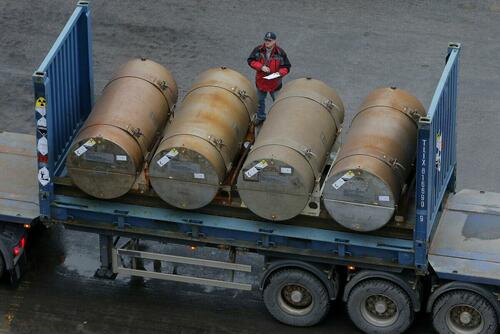 A truck carries containers with low-enriched uranium to be used as fuel for nuclear reactors, at a port in St. Petersburg, Russia
A truck carries containers with low-enriched uranium to be used as fuel for nuclear reactors, at a port in St. Petersburg, Russia
 (Illustration by The Epoch Times, Shutterstock, Getty Images)
(Illustration by The Epoch Times, Shutterstock, Getty Images)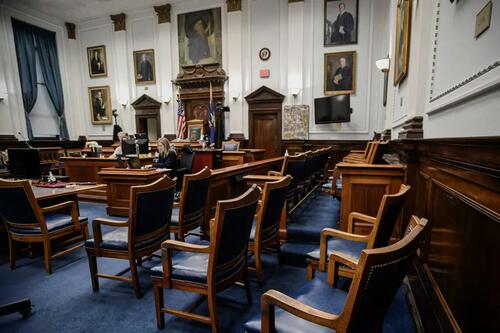 A courtroom at the Kenosha County Courthouse in Kenosha, Wis., on Nov. 17, 2021. (Sean Krajacic - Pool/Getty Images)
A courtroom at the Kenosha County Courthouse in Kenosha, Wis., on Nov. 17, 2021. (Sean Krajacic - Pool/Getty Images)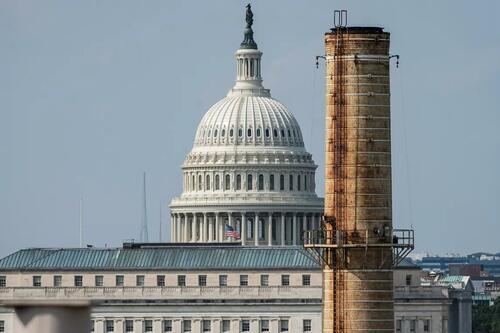 The chimney stacks of the Capitol Power Plant, a natural gas and coal burning power plant that provides steam and chilled water for heating and cooling of the congressional buildings, sits near the U.S. Capitol on Aug. 22, 2018.
The chimney stacks of the Capitol Power Plant, a natural gas and coal burning power plant that provides steam and chilled water for heating and cooling of the congressional buildings, sits near the U.S. Capitol on Aug. 22, 2018. 
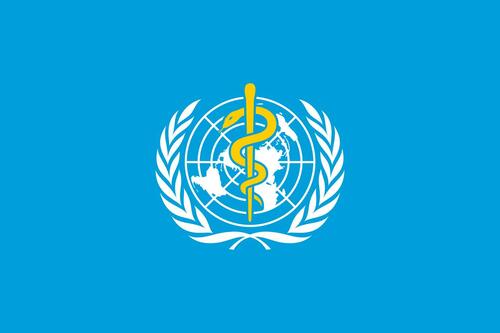

 A sign is displayed in front of Health Canada headquarters in Ottawa in a file photo. (Sean Kilpatrick/The Canadian Press)
A sign is displayed in front of Health Canada headquarters in Ottawa in a file photo. (Sean Kilpatrick/The Canadian Press) Signage identifies the men’s and women’s restrooms at a business in Chattanooga, Tenn., on Jan. 13, 2023. (Jackson Elliott/The Epoch Times)
Signage identifies the men’s and women’s restrooms at a business in Chattanooga, Tenn., on Jan. 13, 2023. (Jackson Elliott/The Epoch Times)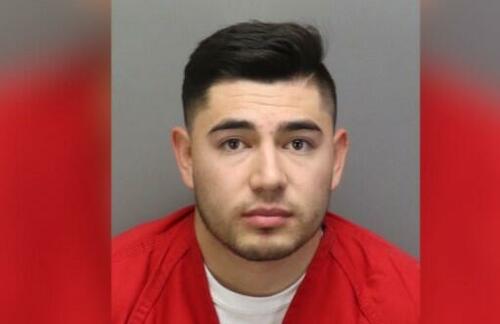
 An ampule with Botox, with the European name "Vistabel," at a cosmetic treatment center in Berlin in this Jan. 29, 2007, file photo. (Andreas Rentz/Getty Images)
An ampule with Botox, with the European name "Vistabel," at a cosmetic treatment center in Berlin in this Jan. 29, 2007, file photo. (Andreas Rentz/Getty Images)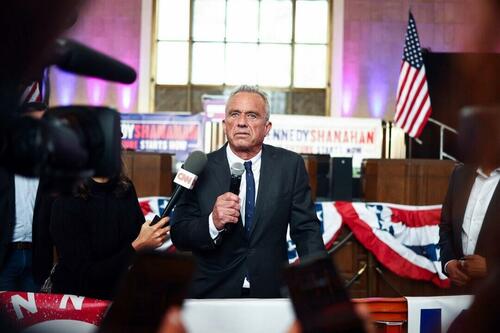




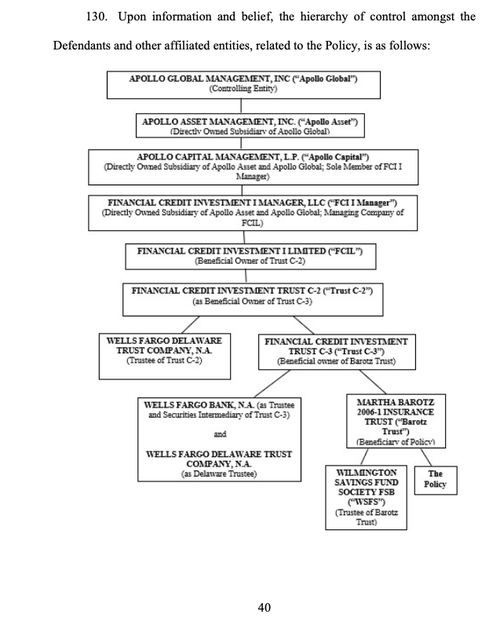



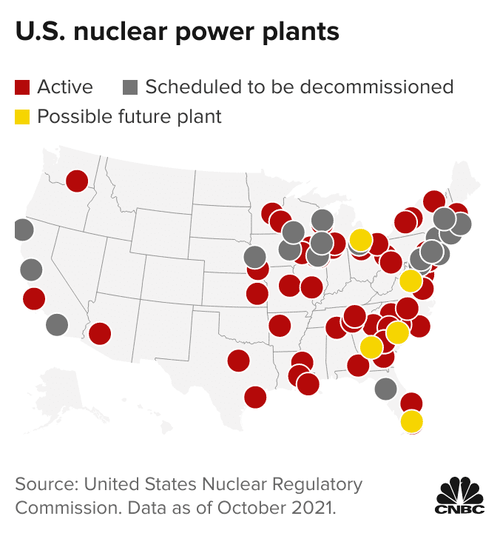



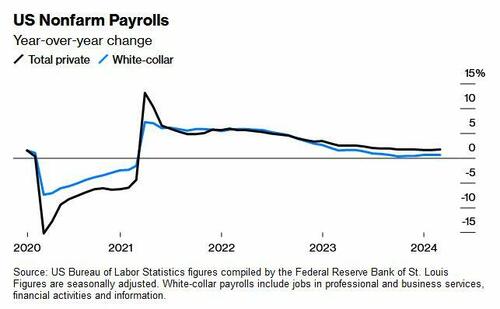
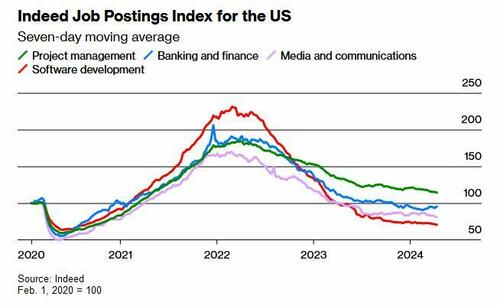
 Source: Vanguard, as of October 2023.
Source: Vanguard, as of October 2023.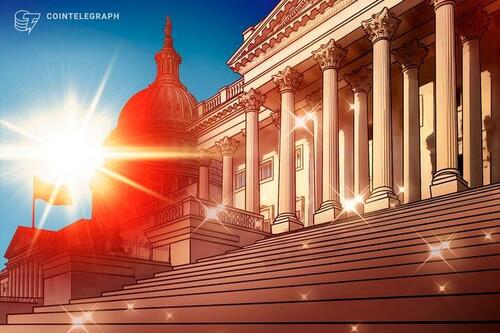

Recent comments